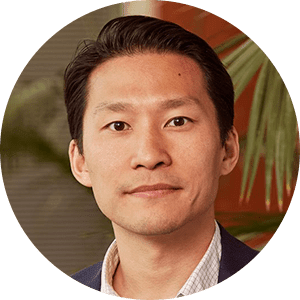Faces of EBCE — Howard Chang
July 2, 2019

After a five year stint on Wall Street doing investment banking for JP Morgan, EBCE’s chief operating officer Howard Chang came to a crossroads. “I learned a lot on Wall Street but I didn’t feel personally fulfilled,” he recalls. The booming renewable energy industry offered a chance to align his professional analytical background with a personal commitment to environmental issues.
He merged these two areas at Yale, where he got a dual master’s degree in business administration and environmental studies.
Out of grad school, he moved to San Francisco to work for solar company Sun Edison, doing project finance and operations for utility-scale and commercial rooftop projects. When Sun Edison shut down in 2016, he moved over to Sol Systems, leading utility development and project acquisitions nationwide.
When the EBCE post came up in 2017, he was intrigued. “The federal election results had shut down climate progress at the national level, so making a tangible impact at the local level seemed like a good idea,” he says.
Plus as operations chief he would have a chance to build the organization from the ground up. EBCE was a startup in the rapidly emerging field of community choice aggregation (CCA).
“When I joined I didn’t foresee how expansive CCA would become and the level of impact it would have,” he admits. “The last year and a half has been very rewarding.”
Howard’s primary role as COO has been procurement, developing power supplies for EBCE’s 550,000 customers, about six terawatt-hours per year (or six billion kilowatt-hours). Since EBCE is a startup, the task has been uniquely satisfying.
“Historically you join an investor-owned or a municipal utility and they would have a long legacy of procurement, decades of contracts and investments,” he says. “Your role would be to add one small sliver.”
“What’s unique about EBCE is that we are building a book from scratch,” he says. “We can be thoughtful about it, and very efficient. It’s both exciting and daunting.”
Risk Management
Risk management is the most important part of such a high-stakes undertaking.
“We have to be really careful since we are buying a lot of energy at once,” he explains. “We can actually move the market in the process, and affect our own prices.”
To manage the risk, Howard is developing a mix of short-term and long-term contracts, from a variety of technologies, locations, and buyers, with a judicious dose of hedging to act as insurance.
While solar power is affordable and plentiful — and easy to develop — just relying on the sun for EBCE’s needs is risky. California already has enough solar to meet much of the state’s demand in some early afternoons, but then it fades with the sunset, leaving other power sources scrambling to pick up the load. The daily chart of net demand has become known as the “duck curve,” since it looks like a swimming duck in profile — falling to the belly in the day, rising to the head in the evening.
“Solar will be a major source of renewable energy, especially as we look at long term targets,” says Howard. “But we have to be careful we are diversifying with technology and mitigating the ‘duck’ risk with storage.”
EBCE has just started rolling out new contracts for renewable energy and storage, with more on the way. (See article here.)
On June 5, the EBCE board approved a contract for 55MW of solar in Tulare County, plus battery storage in Jack London Square, as part of the Oakland Clean Energy Initiative. On June 19 the board approved another 100 MW of solar plus 30 MW of storage in Fresno County, plus a contract for power from a new 57.5 MW wind farm in Alameda County.
The new wind turbines will be a far cry from the old machines that have been slowly getting removed from Altamont Pass. Altamont was the birth of the world wind industry in the 1980s. New turbines are much larger, with slower spinning blades, and much more efficient.
“Altogether we anticipate signing contracts for 500-600 MW of new renewable projects in California by the end of July, plus 40-60 MW of storage,” Howard says. That should be enough for 25 to 30 percent of EBCE’s annual energy needs.
The Whole Picture
In the long run, state law (SB100) requires the whole power system to transition to be 100 percent clean by 2045. EBCE is already 5 percent ahead of state requirements.
But Howard says that is only part of the question.
“It’s not just how do we increase our renewable supply, but how do we drive electrification in transportation and buildings,” he says. “Those are the major sources of carbon in our economy. SB100 lays out a plan for the power sector, but we have to go beyond. Many EBCE goals are about transitioning other sectors away from gas and oil.”
Those plans are partly embodied in the Local Development Business Plan, but others are evolving as opportunities and technologies change.
EBCE’s long term procurement will be guided by the Integrated Resource Plan (IRP), a thorough 10 year plan to be filed with state regulators.
“We want to see as much local development as possible, like solar owned by our customers,” Howard says. “The challenge is to balance that with affordability and reliability. Those pillars are just as important as local.”
EBCE plans to complete its 2020 IRP over the next 11 months, through a public consultation with the Board and the community, along with a feasibility analysis.
“We would love to get to 100 percent carbon-free sooner than 2045 but we have to approach it carefully, and look at the whole picture.”